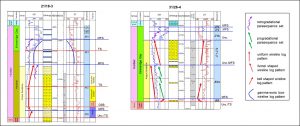DEVEX debrief
Bill Wilks, Sandy Smith and Paul Taylor travelled to Aberdeen to represent Merlin’s Geoscience Consulting, Datawise and Geochem Divisions at the DEVEX 2022 meeting on 10th & 11th May. Continue reading to find out more about the conference and our take-homes from the event..









